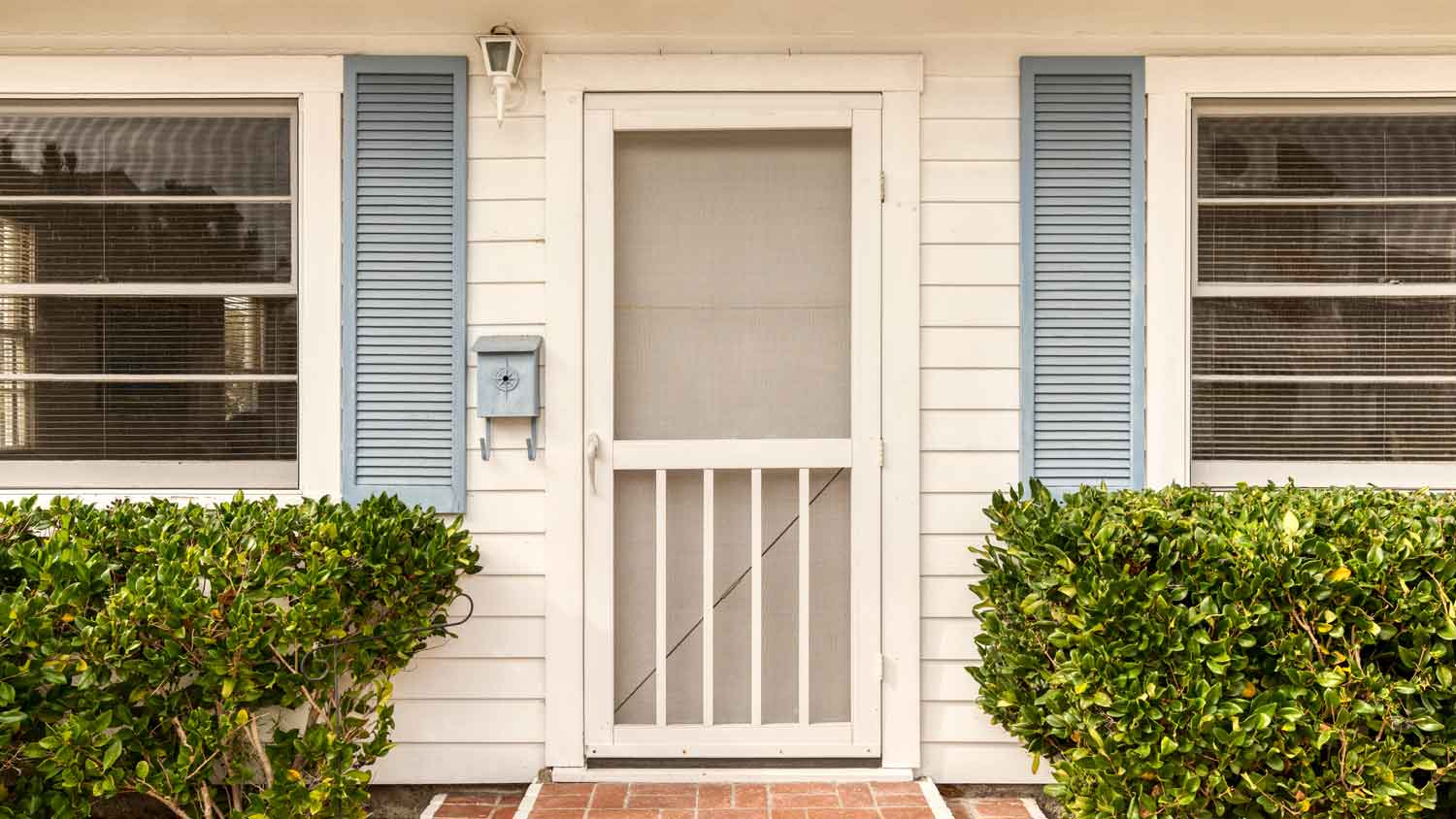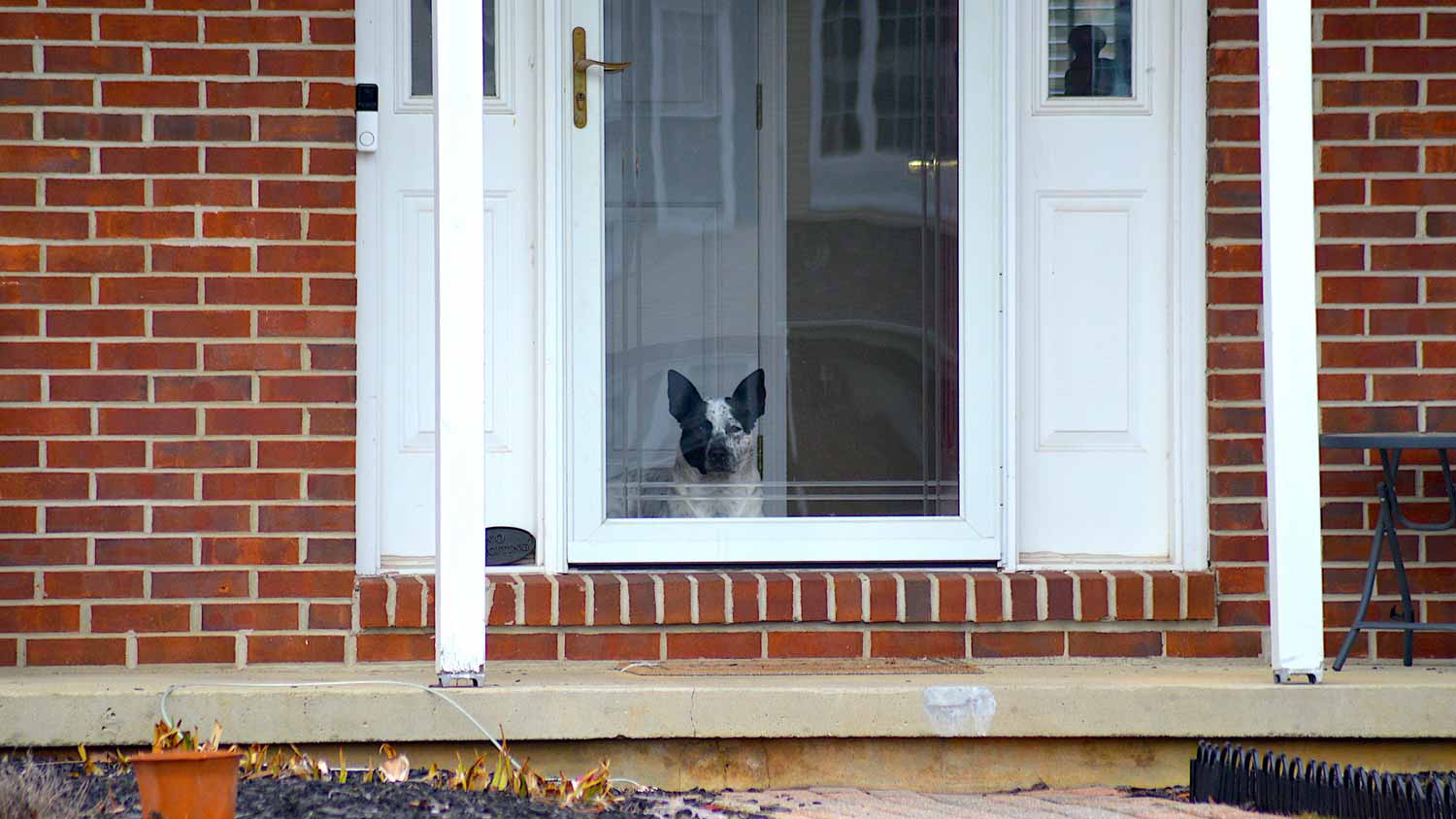Storm Door vs. Screen Door: How to Choose the Right One for Your Home
Make it a breezy decision


Screen doors keep out pests while allowing maximum ventilation and natural light.
Storm doors offer more protection, insulation, and energy efficiency.
Storm doors with a retractable screen allow for the best of both worlds.
Screen doors cost less than storm doors but tend not to hold up as long.
A storm or screen door can add function and quality to your home by letting in a cool breeze or protecting your main door from the elements. When deciding on a storm door versus a screen door, look at your preferences, budget, and the main uses for your door. Learn all about screen doors versus storm doors and when to choose each.
Storm Door vs. Screen Door: Key Differences
Storm and screen doors serve as secondary exterior doors at a home's main entrance, but they have different benefits and disadvantages. A storm door’s main purpose is to add protection against severe weather conditions like snow, wind, and rain, so they’re made of heavier and more durable materials. They can also add insulation against high or low temperatures and improve curb appeal.
Screen doors let in light and air while keeping out unwanted pests and bugs. A screendoor may make sense for your home if you live in a moderate climate and don’t need the level of protection that a storm door offers.
Storm Door Pros and Cons
Storm doors are tempered glass doors installed outside your exterior door. The low-emissivity glass offers protection from elements like rain, snow, storms, and heat. Installing a storm door adds security to your home with an extra lock and glass panel. Storm doors also allow more natural light to enter your home, but they don’t provide ventilation unless you choose one with a retractable screen. Often made with aluminum, steel, composite, or vinyl frames, storm doors allow the beauty of your door to shine through.
Pros
Protects your main door from the elements, including rain, snow, ice, and storms
Offers energy-efficient insulation by blocking out heat, sunlight, and cold
Provides extra security to your home’s entryway
Lets natural light in when the main door is open
Is a source of air ventilation if there’s a retractable screen
Enhances curb appeal with beautiful glass or architectural designs
Allows for a more welcoming entryway
Keeps out pests and bugs
Reduces noise from traffic and the neighborhood
Can include a pet-friendly door
Cons
Inconvenient when carrying large items, such as groceries and furniture
Can lack ventilation if there’s no retractable screen or switchable panels
Not necessary if you have a covered porch or overhang
Costs more than screen doors
May need to be replaced every 10 to 20 years if frequently used
Can trap heat, leading to front door damage after long exposure
Screen Door Pros and Cons

Screen doors are installed outside an exterior door and feature a screen to keep out pests. They help ventilate your home while letting in natural light and sounds like birds chirping. There are different types of screen doors, styles, and colors to choose from. These can complement your home with wood, vinyl, or aluminum frames.
The screen might extend from the top to the bottom of the door or only have a screen on the top portion. You can add a screen door to your patio, porch, or deck door to allow for connection and airflow between the indoor and outdoor spaces.
Pros
Allows natural light to enter your home
Provides ventilation and airflow
Prevents bugs and pests from coming in
Offers a friendly, open aura for neighbors and guests
Available in many styles, colors, and designs
Great for moderate temperatures and climates
Less expensive than storm doors
Can include a pet-friendly door
Cons
Don’t offer as much energy efficiency
Can require frequent repair or replacement in high-traffic areas
May offer limited use in hotter, more humid climates
Not always sturdy or durable
Storm Door vs. Screen Door
Both storm doors and screen doors can enhance your entryway and home. Learn how the two compare in critical categories when deciding on a screen door versus a storm door.

| Storm Door | Screen Door |
|---|---|
| Adds security and energy efficiency | Offers ventilation without pests |
| Protects main door from the elements | Doesn’t provide weather protection |
| Lasts up to 30 years | Lasts up to 25 years |
Appearance

Storm doors are more polished, featuring tempered glass and durable frame materials. Screen doors can look sharp if they’re made well and well-maintained. Both should highlight your main door and complement the rest of your entry.
Options and Customizations: Storm Doors
Storm and screen doors come in various styles, options, colors, and designs. Storm doors with retractable screens give you the best of both worlds: protection against the elements and a screen for ventilation.
Durability: Storm Doors
Storm doors are more durable, with tempered glass and vinyl, wood, composite, steel, or aluminum frames. They hold up better than screen doors, but you must maintain them if they’re in a high-traffic area. Screen door frames are made from lighter-weight materials, such as vinyl, pine, or aluminum.
Price: Screen Doors
Screen doors cost an average of $300 for a standard option, while storm doors cost an average of $425 but can go up to $1,600 depending on the size, weight, and door type.
Ease of Installation: Screen Doors
If you’re an experienced DIYer, you can install a storm door or screen door yourself. Screen doors are lighter and easier to install, while storm doors take more precision and strength. Proper installation leads to better functionality and a longer life span, so hiring a local storm door installer may be best for your project.
Maintenance: Storm Doors
Screen doors require more attention and repairs due to possible holes or tears in the screen. You’ll still need to clean the storm door and weatherstripping to maintain it, but generally, the upkeep is much less than that of a screen door.
Length of Life: Storm Doors
Storm doors last up to 30 years, while screen doors last up to 25 years. However, screen doors will likely see more wear and tear and can deteriorate well before their expected life span.
Energy Efficiency: Storm Doors
Storm doors keep out heat, sun, cold, weather, and the elements more effectively than screen doors. They offer extra insulation and lower your utility bills. They can also add a sound barrier to limit noise from the street or neighborhood. However, screen doors provide more ventilation, allowing you to let in a cool breeze on a summer day and reduce your AC use.
Security: Storm Doors
Storm doors offer another layer of protection on your door, often with an extra lock or even decorative metal grating. The strong glass deters easy break-ins.
ROI: Storm Doors
Storm doors add more value to a home than screen doors. They offer better protection from the elements and intruders, act as insulation, and can lower utility bills.





- Do I Need a Storm Door? What to Consider
- What Is a Storm Door? 9 Reasons to Consider Installing One
- Screen Door Buying Guide
- 4 Types of Storm Doors and How to Choose the Best One
- Storm Door vs. Security Door: Which Is Right for Your Home?
- Exploring the Different Parts of a Storm Door and Their Functions
- How to Measure for a Storm Door to Get the Perfect Fit
- How to Fix a Gap Between a Storm Door and Frame to Seal Your Home
- 5 Ways To Make Your Front Door Energy Efficient
- Fiberglass vs. Wood Door: Which Is Best for Your Home?










